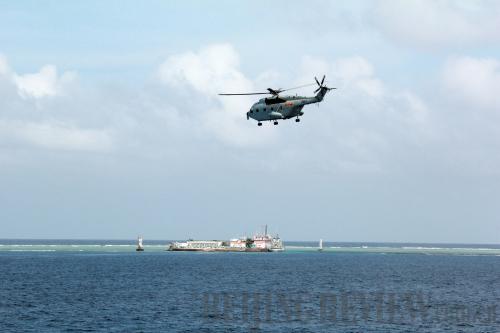
A Chinese helicopter patrols the South China Sea on January 25, 2014 (XINHUA)
Why U.S. criticism of infrastructure projects is unfounded
The Shangri-La Dialogue—a moniker that suggests the tranquil, snow-capped peaks of the Himalayas and the simplistic lifestyle of China's Tibet Autonomous Region. Names, however, can be deceiving.
The dialogue, a regional security summit held in Singapore in late May, became little more than a room full of tense officials after the United States flew a reconnaissance aircraft through Chinese airspace while transporting members of CNN's news crew.
The flyover, which took place above the waters surrounding China's Nansha Islands and was undertaken by a U.S. P-8 Poseidon aircraft, has sparked controversy internationally.
Information from China's National Defense Ministry shows that in recent weeks, the U.S. Navy has intensified surveillance operations over Chinese waters.
In recent years, the annual Shangri-La Dialogue has been filled with an air of discontent due to the Obama administration's Pivot to Asia strategy, as well as other countries in the region wishing to take advantage of the U.S. initiative to further their own interests and seize portions of China's sovereign territory. Last year, China became the target in a war of words as some other nations tried to bring bilateral maritime disputes into the international arena.
This year, with the United States attempting to draw attention to China's infrastructure projects on the Nansha Islands ahead of the summit, China unsurprisingly became a focus of the summit once more.
Nevertheless, many Chinese observers noted that U.S. criticisms of China's construction activities are both unfair and lacking a legal basis. These construction projects fall well within the scope of China's sovereignty. While the projects have some basic defense functions, they will be used for a variety of civilian purposes that will enable China to better meet its international responsibilities.
In addition, observers said that the move of the United States aimed to do nothing more than display its leadership and strength to its regional allies, so that it could further cement its dominance in the region.
















































